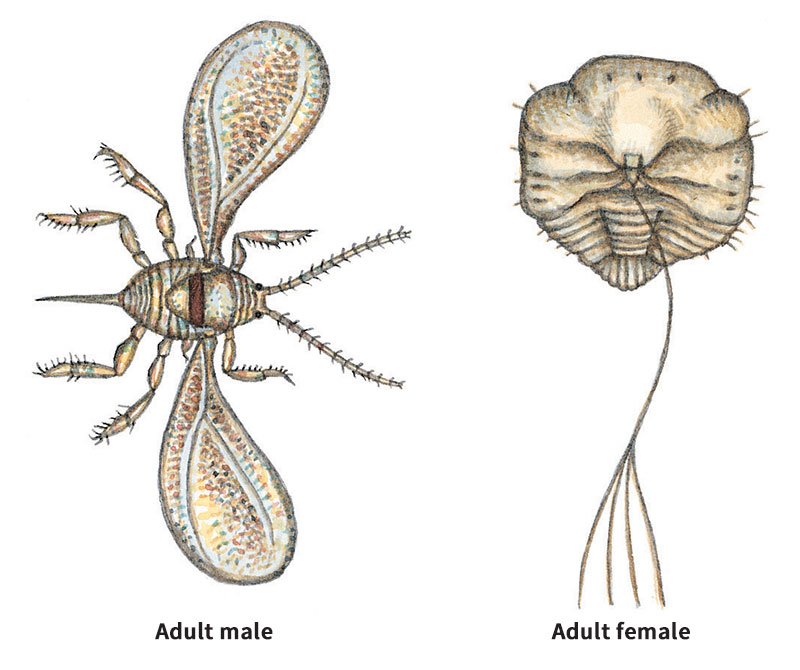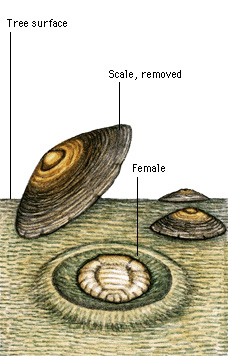San Jose, << SAN hoh ZAY, >> scale is an insect pest that feeds on many kinds of fruit trees, shade trees, and ornamental shrubs. The insect is named after the city in California where it was first seen in the United States. The San Jose scale is native to China. It was imported into the United States accidentally, probably during the late 1870’s in a shipment of ornamental peach trees. The scale spreads rapidly on infested trees and shrubs. It is now a common pest in orchards and nurseries throughout the United States and southern Canada.

The San Jose scale most commonly affects trees in the rose family, including apple, cherry, peach, pear, and plum trees. The insects may weaken a tree or reduce its yield of fruit. Heavy infestations can kill a young tree within two or three years.
Young scales, known as crawlers, have lemon-yellow bodies. They resemble tiny ticks with six short legs. Crawlers suck sap out of the plants they live on through long, slender mouthparts. After feeding begins, the insect secretes a protective covering, called a scale, over its body. As it grows, the insect sheds its legs and then cannot move. Crawlers develop into adults in six to eight weeks during the summer. Only immature scales survive the winter.
A mature scale cover is no larger than a pinhead. Beneath the cover, a female’s body is soft and saclike. She has no legs or wings and never leaves her covering. Adult males leave their scale cover to fly in search of females. The males have two delicate wings, antennae, six legs, and a distinctive brown stripe across the back. The females release a scent that attracts males for mating. Each female may produce 300 to 400 live young (crawlers) before she dies.

Ladybird beetles, wasps, and mites prey on the San Jose scale. Most insecticides cannot penetrate the scale’s protective cover. However, in late winter, many fruit growers spray their trees with an oil that coats and suffocates the scale insects.
